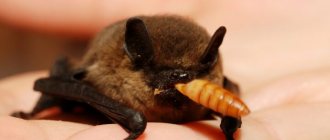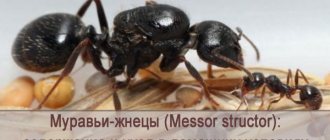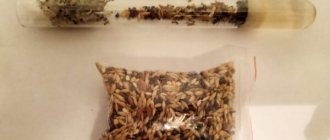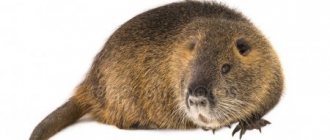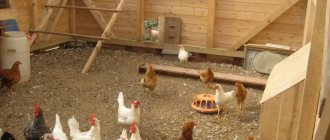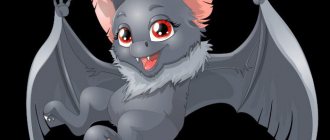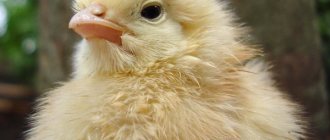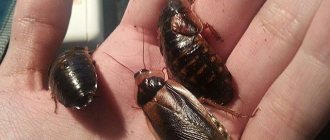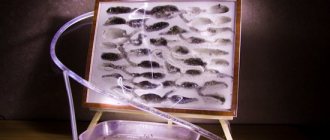Decorative pet mice are an ideal option for those who have decided to have their own animal or teach a child to take care of the weak, but are limited by time, funds and square meters.
You can squeeze the mouse
Unlike phlegmatic fish - other inhabitants that do not take up much space - rodents are able to respond to affection: you can stroke them, feel the warmth of a small body in a fur coat, they are quite affectionate and enjoy sitting in your arms.
Varieties: mouse and mouse are different
Oddly enough, tamed and domesticated mice are divided into only two types. The first species is the albino mouse, also known as the white laboratory mouse. The decorative house mouse is an animal weighing on average 30 grams. with a body 7-12 cm, a tail of the same length, hard, medium-length fur, often one-color: black, brown, gray, sandy color. The lifespan of this miniature animal is on average 2-3 years.
White mouse
The white mouse stands apart - the ancestor of the entire mouse movement. Bred before our era, this creature was a frequent guest in the homes of Chinese emperors, and later, brought to England, quickly won the sympathy of all pet lovers.
In the 19th century, they were attracted to participate in laboratory experiments, as a result of which a separate species appeared - the laboratory mouse. She was bred to participate in laboratory experiments to study social behavior patterns, test medications, and much more that directly benefits humanity. For pet lovers, this species is not so attractive, although albino mice can still be found in city apartments.
Pros and cons of keeping mice
A person who wants to become the owner of a decorative mouse needs to clearly understand all the advantages and disadvantages of this solution. You should not get a rodent if you have family members with allergies or a panic fear of such creatures. Mice are also not suitable as pets for small children and people who keep a large number of other pets.
Among the advantages of keeping these particular animals:
- The small size of the animals means that the established place of residence will not occupy a significant area. For decorative mice, a cage is sufficient in which each individual receives approximately 15-25 cm of space (but the more, the better).
- Relatively cheap . Store-bought food for pet mice is inexpensive, and each individual needs only 10-12 g of food daily.
- Purity . With regular maintenance, your home will not smell like mice. In addition, they rarely leave odorous “nuisances” in the corners, compared to cats or dogs.
- Training opportunity . With desire and effort, mice can be taught some tricks.
- Aesthetic appearance . Decorative animals look very attractive, and the owner can choose any pet for himself - bald, shaggy, snow-white or chocolate.
Disadvantages of choosing domestic mice as a pet:
- Mice don't like to play with their owner too much . Rodents view humans solely as a source of food.
- The lifespan of pets is a maximum of 3-4 years (with the best care and treatment - 5 years). In addition, it is quite difficult for mice to provide medical care, which also does not contribute to long life.
- Animals require care . If the owner wants the decorative rodent to live a long time, and the house not to smell of “mouse presence,” he will have to regularly clean the cage, wash the house and toys, and also create the right diet.
- Night activity mode . Running around the cage, using the wheel, crunching near the feeder - the owner will hear all these sounds just when he is getting ready to go to bed.
- A threat to things and the pet itself . If a mouse is given freedom of movement in a human home, it can chew furniture, and in cases where wires and sockets are in the access area, cause serious harm to itself.
The fact that decorative mice are quite indifferent to the owner is both a minus and a plus. On the one hand, you won’t be able to play with such a pet. On the other hand, these are ideal pets for those people who have little free time.
Kinds
Many people believe that house mouse breeds are limited to only gray or white. But breeders have bred different types of pets that have curly, satin, long or short hair. The color also varies, which can be monotonous or multi-colored.
Mice colored in the colors of chinchilla, sable and other animals are not rare exceptions. In addition, it is worth mentioning a bald pet, which gives the future owner a wider choice.
Rules for keeping mice
If you decide to get a mouse as a pet, you should take care in advance to create all the necessary conditions for it. The most important thing is to choose a cage, arrange it, position it correctly and learn how to clean it.
Cell selection
It is best to keep decorative rodents in cages - in no case in aquariums or jars. The structure must be spacious enough to accommodate a house and toys (wheels, ladders, ropes), and it must also be equipped with strong metal rods. Another important condition is the presence of a deep retractable tray, thanks to which the mouse will not be able to scatter garbage around the home, and cleaning the cage will be carried out quickly and without difficulty.
Basic requirements for the cage:
- reliability - doors that close tightly, the absence of sharp protrusions and irregularities, and defects such as chips;
- spaciousness - the mouse should have room in the cage to move freely;
- equipment - in the territory in which the animal will live, there must be what it needs for a full-fledged existence.
The optimal cage size is 50x30x30 cm for a pair of mice.
Arrangement of the cage
A cage for decorative mice must have:
- a house - in which the rodent will hide, sleep and raise offspring;
- feeder - an automatic design or a regular container for purchased grain feed;
- drinking bowl - a drip system attached to rods;
- bedding or filler to fill the floor (they will have to be changed at least 2-3 times a week or more often if an unpleasant odor appears);
- various toys - stairs, wheels, tunnels, perches and shelves, balls for the development and fun of mice.
All items for pets should be made of high-quality materials that can be washed and cleaned regularly.
Conditions of detention and choice of location for the cage
The location where the cage is installed in the house must meet a number of requirements, otherwise the animals will begin to suffer from a variety of health problems.
- The cage should be protected from drafts, fans and air conditioners, but regularly ventilated.
- It is recommended to install the structure in a room with optimal air humidity (no more than 50%) and temperature (about +20°C), away from heating sources.
- The room where the mouse cage is located should be light enough.
The most important condition contributing to the long life of a tame rodent is safety. Protection from children and pets, insulation of electrical wires and sockets, absence of secluded corners in which a mouse can get stuck - all this will allow the pet to delight the owner with its presence for the longest possible time.
Life activity
If you decide to breed mice, try to relocate the brood as soon as possible - there are often cases when the male simply eats them.
Keep in mind that the mouse will be active at night - during this period, food must be present. Don’t forget about clean water; without it, your pet won’t be able to live even three days. Like other animals, the house mouse is susceptible to disease.
The main signs of the disease are lack of appetite, lethargy, and rapid teeth growth. It wouldn't hurt to go to the vet if you really care about your pet.
Rules for caring for mice
Decorative mice are quite undemanding in terms of care. If they have a sturdy cage with a house and all kinds of toys, located in the right and safe place, the only thing left on the list of necessities is good nutrition. On this basis, it is already possible to engage in taming.
Feeding
You can feed mice either purchased grain feed (with the obligatory addition of a juicy component and all sorts of tasty additions), or independently prepared mixtures.
The first option is more convenient, since the owner does not have to think about the balance of nutrients in the mouse’s diet. Those owners who plan to make food themselves should remember that the finished product should contain:
- 14% proteins;
- 10% fat;
- 9% fiber.
The basis of the diet is grain feed (millet, oats, wheat, millet, barley, rye, nuts, sunflower seeds). It should be regularly supplemented with juicy foods - vegetables (carrots, cabbage, cucumbers, pumpkin, zucchini), fruits (apples, pears), berries, fresh herbs.
It is strictly forbidden to feed mice scraps from the human table. Everything fried, spicy, salty, smoked and spicy should be excluded from your pet’s diet.
Animal protein is very important for ornamental mice, which they should receive in the form of boiled eggs, boiled white chicken meat, fermented milk products, insects and larvae. Vitamins and minerals should be given to rodents either with food or dissolved in water.
Tasty additions to the main diet - pieces of black bread, dried fruits, chalk. To maintain dental health, it is advisable to give rodents young branches of willow, hazel, rowan and apple trees, and to replenish vitamin C - pine and spruce needles.
Approximately 1 tsp per day is enough for mice. grain feed and 2-3 g of succulent feed. There must be a drinking bowl with fresh, clean water in the animals’ access area.
Cleaning
Cleanliness in the cage is the key to the health and long life of a decorative mouse. Cleaning should be done regularly, at least 2-3 times a week:
- throw away the litter and change the litter;
- clean the tray, removing leftover food and other debris;
- wash feeders, drinkers and toys.
The retractable tray makes cleaning the cage much easier.
Taming
Well-fed, well-groomed and healthy mice are ready to communicate with their owner. These shy creatures quickly get used to being handled when following a few rules:
- For a mouse to feel comfortable, it must know the smell of its owner. To do this, immediately after buying a mouse, the owner should put his clean sock in the cage (first, you need to cut off his toe and wear it close to the body for a couple of days). The pet will sleep in the sock or even use it to build a nest, so over time it will get used to the smell.
- Use treats. Each time the mouse approaches its owner, it should be given a small piece of bread or other treat. Food should be given by hand, and not placed at the bottom of the cage. This way the animal will associate its appearance with its owner. In the future, you can lure your pet with sunflower seeds by sprinkling them in the middle of your palm: over time, he will trust his owner and climb onto his hand.
- Patience and calm will help establish contact. You can't just pick up a mouse and hope it gets used to it. The best solution is to place your palm on the floor of the cage and wait until the curious animal sniffs everything thoroughly and examines everything, and then becomes imbued with trust and begins to climb on your hand.
Nutrition
One of the frequently asked questions when purchasing this type of pet is “ what to feed decorative mice .” The answer is simple - almost everyone. Mice are indiscriminate eaters. They love these products:
- corn;
- oats;
- barley;
- corn.
Occasionally you can treat them with a small amount of seeds. Their favorite dishes are curd products, cheese and egg whites (boiled). It should be remembered that these pets, like any other living organisms, require useful substances, so you need to buy them dry food.
Due to the fact that rodents have a very high metabolism, it is necessary to constantly monitor the fullness of the feeder. To reduce the likelihood of dental problems, you should provide mice with twigs from fruit trees, they will grind their teeth on them. Under no circumstances should plants such as:
- wolfberries;
- celandine;
- bracken fern;
- nightshade;
- dope.
The elements contained in the above plants are dangerous to the health of mice and can lead to immediate death.
Mouse health
The health and life expectancy of a domestic mouse depends on the conditions of its maintenance and care. If you choose the right cage location and proper nutrition, the rodent will live a long and happy life. The owner also needs to monitor the behavior and condition of the mouse, responding to the following alarming symptoms:
- apathy and impaired motor activity;
- lack of appetite;
- untidiness of appearance – tousled fur, loss of tufts of fur;
- blood in the urine and discharge from the anus;
- teary eyes.
If you regularly pick up the mouse and examine it, health problems can be noticed in the early stages, therefore, it will be possible to seek professional help in time.
Prevention of mouse diseases is as follows:
- Proper nutrition.
- Compliance with containment conditions.
- Quarantine for new arrivals (for 1-2 weeks with constant monitoring) and sick individuals (the duration depends on the course of the disease).
How to properly maintain it?
In fact, keeping pet mice is not a difficult task. It is easy for them to adapt to new living conditions, in addition, they are not too demanding.
With proper care, the lifespan of this creature will be approximately three years. If you get a pair of mice, keep in mind that they have a high fertility rate, and you need to immediately calculate where to put the offspring after the offspring.
Rules for Effective Communication
To consolidate taming and effective communication with the pet, you need to allow the mouse to gradually get used to the owner. It is recommended to pick up your pet rodent several times a day, spending at least half an hour playing.
To begin to accustom a mouse to a nickname, at the first stage it is necessary to cover the cage with thick fabric - thanks to this, the owner’s voice will become the only source of information for the animal. After this, say the name of the mouse several times, and then remove the cloth and pamper your pet with a treat. After a couple of days, repeat the learning process in daylight.
The nickname for the mouse should be short, no more than 2 syllables and contain the consonant sounds s, n, m, k, ts, ch, sh, shch.
Ornamental mice can be fun pets that are fun to watch. They are quite easy to tame, but they need to be constantly looked after. The cleaning and feeding processes are not too complicated, but they can keep the owner’s house clean and provide the animals with a long, rich life.
Tips for choosing the right cage for decorative mice and its contents. Proper organization of nutrition for domestic rodents in the video:
